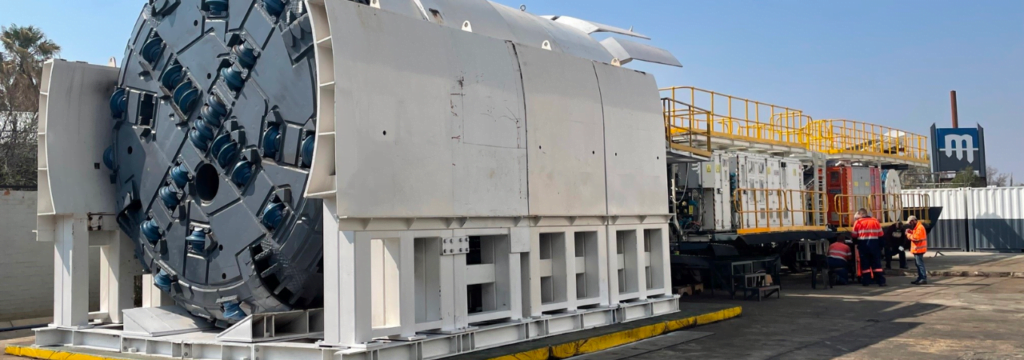Remaining Agile and Adapting to Growing Demands is Possible with the Move to Autodesk Technology.
Overview
Master Drilling, a global leader in Raised Boring and drilling services, is headquartered in South Africa and operates across multiple continents. In Africa, the company has a presence in the Democratic Republic of the Congo, Zambia, Mali, Ghana, and Sierra Leone. In Latin America, it operates in Brazil, Chile, Colombia, Mexico, and Peru. Additionally, Master Drilling has established itself in several other countries, including the US, Canada, Australia, India, Turkey, China, Russia, and France.
The company was founded in 1986 by Executive Director, CEO, and Founder Daniël Pretorius in Fochville, a small mining town in the West Rand of Johannesburg, South Africa. Over the years, Master Drilling has grown significantly to become a leading global name in the industry.
Challenge
Having existed since before much of today’s technological advancements in Computer-Aided Design (CAD) software, the team at Master Drilling has long been reliant on working in a 2D design environment, which, by the measure of their success over the past 37 years, has proven effective. However, as the local team continued to grow and projects in scale, the need to move into more innovative ways of designing, manufacturing, and servicing their machinery became apparent to meet the growing market’s demands in raise boring related services.
Today, Master Drilling has about 2000 employees across the globe, including specialist engineers, who all work to ensure that the company’s global footprint is aligned with its vision and goals. The South African engineering team comprises about 30 people, each playing a vital role in the international company’s success through the innovative design and manufacturing of machinery deployed worldwide, efficient procurement processes to meet the growing demands, and effective collaboration across multiple time zones and departments.
To get to this preferred state of collaboration across multiple lines of geographies, projects, and teams – the technical design office at Master Drilling HQ looked into moving from a 2D design environment to a 3D design environment seven years ago with Autodesk Gold Partner Baker Baynes.
Gerhard Pretorius, Engineering Manager, shares that with such a large team working on multiple projects in various locations and in different time zones and project sites – it was important for the team to adopt a more integrated and collaborative way of working that does not hinder any project but propels each team member to be able to execute their tasks independently, from one collaborative platform – which Autodesk’s Data Management Solution, Autodesk Vault Professional has proved to be ideal for.
And while the team was previously well versed with Autodesk’s design solutions such as AutoCAD, Inventor and, more recently, Vault Professional and ReCap – the team embarked on a year-long digital transformation journey to drive increased efficiency across technical design and procurement departments with the support and guidance of Baker Baynes – which they did through a detailed analysis of the then practices and processes.
The goal for the time and financial investment in this digital transformation journey, according to Pretorius, was essential for three key reasons:
- Moving from a 2D to a 3D Design environment was necessary for eliminating repetitive mistakes, which can be costly.
- Have a reliable and secure Common Data Environment (CDE) to integrate different team members and departments to communicate project data changes and procurement requirements effectively and without downtime, further aiding production efficiencies.
- To become more agile and adaptable to the growing specialised needs of the markets and customers they serve.
Solution
Since embarking on their digital transformation journey with Baker Baynes, Pretorius shares that the team has seen significant improvements in how project data is shared between teams and projects. A benefit he attributes to their usage of Autodesk Vault and shares “the user interface works well and effectively across technical drawing departments, and our procurement departments – who are getting ahead of procurement demands faster.”
Autodesk Vault Professional offers the team increased efficiency in communicating engineering drawings on and offline – which has only been beneficial in the process of design reviews and analysis.
At the same time, the libraries in Autodesk Vault Professional have made it easier for the design team to scale or manipulate design changes even quicker by accessing pre-drawn design data – reducing the time spent re-designing components and maintaining outputs.
Moving into the 3D Design environment with Autodesk Inventor has also significantly impacted the speed they can now go from designing to manufacturing.
“What used to take us 2- 3 months of machinery design time now takes us about 2 – 3 weeks, and we get to quality inspection and control much quicker than before.” – Pretorius.
The technical drawing team can now detect potential clashes faster in the designs with Autodesk Inventor’s 3D animation and visualisation of the design work. “Inventor’s stress analysis helps identify potential weaknesses, in addition, the analyse interference function feature helps us identify conflicts between volumes and components much faster, resulting in reduced design time, elimination of waste drawings, and faster scaling of designs. This, in turn, helps our procurement and logistics teams to stay ahead of their bill of materials for manufacturing and deploying machinery on completion,” explains Pretorius.
Conclusion
In summary, Master Drilling’s move into the 3D Autodesk environment has enabled the team to remain agile and adaptable to growing demands.
With this, the team at Master Drilling have further secured itself firmly at the forefront of design innovation, customer satisfaction and retention through high-level service delivery throughout the globe. Pretorius thanks the dedicated team at Baker Baynes for their support throughout this digital transformation journey, which has undoubtedly helped unlock and harness the full potential of technology for the company’s continued success for the foreseeable future.





0 Comments